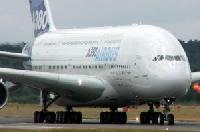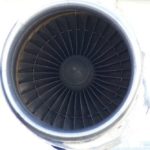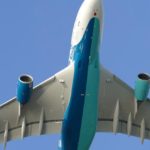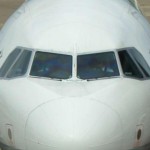During the A380 development phase, Airbus filed more than 380 patent applications for technologies developed for the all new double-decker. Since the programme was launched in December 2000, these new technologies have been put through rigorous testing.
Significant breakthrough innovations have been achieved in aerodynamics, cabin design, engine integration, flight controls, aircraft systems, manufacturing techniques and the extensive use of advanced lightweight composite materials, making the A380 the world’s most advanced and efficient airliner. These intellectual property rights secure Airbus’ innovations and form a solid basis for maintaining Airbus‘ lead in new technological developments.
Among the innovations for which Airbus has filed patent applications is the Zero Splice inlet that is integrated into the A380 engines‘ nacelles. This invention, which consists of a single 360 degree composite piece, instead of several separate panels spliced together, contributes significantly to the A380s very low noise emissions.
Another Airbus industry first is the extensive use of advanced lightweight materials, such as Carbon Fibre Reinforced Plastic (CFRP), for the large primary structures of the A380. Airbus has patented a new joining process for producing the world’s first ever carbon-fibre composite centre wing-box for a commercial aircraft. Some 25 per cent of the A380 structure is made of composites, generating a total weight saving of 15 tonnes, which contributes to its low fuel consumption and low noise emissions.
Airbus has also filed patents for the many innovative systems developed for the A380. These include the avionics data communication network (ADCN) which supports the increasing inter-system communication needs with the benefit of further improving data integrity and transmission speed. Another significant breakthrough in aircraft systems is the Brake-to-Vacate function that optimises the amount of energy used for braking and reduces runway occupancy time, while also ensuring a high level of passenger comfort during landing. Patent applications also cover the Electrical Back-up Hydraulic Actuator (EBHA) which is part of the A380’s new two energy, four-channel flight controls architecture. Conventional flight controls architecture on commercial aircraft has three hydraulic channels. The A380 architecture increases the performance and reliability of the flight controls system due to its dual energy source (electrical and hydraulic) and reduces weight by suppressing one hydraulic circuit.
These Airbus patented technologies will continue to be further improved during the service life of the A380 and a number of these have already been adopted for the A350 XWB. Innovation has always been an Airbus hallmark and the A380, about to enter service, definitely sets the standards for the 21st century.







